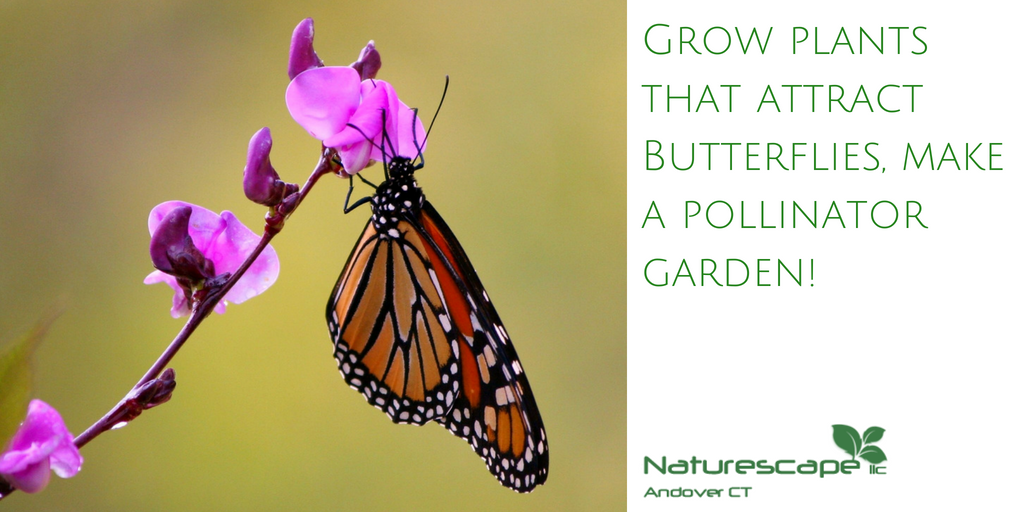
Grow plants that attract Butterflies, make a pollinator garden!
We should all be growing plants that attract butterflies. Over the last 20 years, there has been a noticeable decline in the monarch butterfly population. Butterflies eat their way through the U.S. as they travel down to Mexico for the winter. Unfortunately, the number of monarchs completing the journey is now staggeringly low. The declines this year are largely attributed to severe hurricanes during migration and unseasonably warm fall weather, however, the monarch continues to struggle in the face of multiple threats, including degradation of their Mexican mountain forest habitat, rapid loss of milkweed nectar sources, the increased use of pesticides- specifically products used in the production of corn and soy (GMOs), and impacts from climate change.
Fortunately, Americans have made progress in protecting and expanding habitat for them, as well as native bees and other pollinators, but we simply must do more if we are going to be successful in reversing the monarch butterfly decline. There are many programs designed to encourage people across the nation to grow plants that attract butterflies. Another important step consumers can make to help monarchs is to avoid genetically modified foods (GMO’s). Look for Non-GMO Project verified foods. It’s not the technology itself that is at fault here. It’s the widespread use of Roundup to control weeds for the production of corn and soy. Since milkweed grows alongside these monocultures it’s targeted as a pest weed to the detriment of the Butterflies. GMO crops are now being grown on more than 150 million acres of land in the U.S. and the spread of these crops over the last several decades parallel the monarch’s decline.
You can also do monarchs and other bees and butterflies some good with a strategically planted garden plants designed to attract these important pollinators. Consider the products you use. Certain pesticides, particularly Malathion, Sevin, and Diazinon, will kill butterflies.
Keep the sun in mind. Even if you have just a small patch of land or a balcony, if it gets good sun, you could help support butterflies. There’s a reason we often associate butterflies with gorgeous sunny days; they typically only feed in full sun.
Plant the right colors. Butterflies like bright colors. Think red, yellow, orange, pink and purple. And make sure the blossoms are flat-topped or have short flowering tubes.
Plant the right milkweed. Monarchs only eat from the milkweed plant. But did you know that there are many types of milkweed? Common Milkweed (Asclepias syriaca) is one of the earliest sprouting milkweed varieties which is preferred because of its large, thick leaves that can sustain them over longer periods.
Create butterfly spas. Okay, so you don’t need to invest in a hot tub or sauna (but if you want me to visit, you should), but butterflies do require a little R&R, so why not invite them to do it in your yard? They prefer to rest in full sun, so nice flat rocks, tables or chairs for them to sun in will bring these gorgeous creatures to your yard. They also love puddling, which is basically hanging out in damp sand or mud where they drink a little water and mineralize. You can create specific puddling spots for the butterflies by filling shallow dishes or pans with sand and a bit of water and placing them in sunny spots in your yard.
Other plants that attract butterflies are:
Chives (repel aphids too!), May Night Salvia, Alyssum, Aster ,Bee balm, Butterfly bush, Daylily, Delphinium, Dianthus, Fennel, Globe thistle, Goldenrod, Hollyhock, Lavender, Liatris, Marigold, Musk Mallow, Nasturtium, Oregano, Phlox, Purple coneflower, Queen Anne’s lace, Sage, Scabiosa, Shasta daisy, Stonecrop, Verbena, Yarrow and Zinnia.
For more information, go to:
https://www.fws.gov/savethemonarch/
